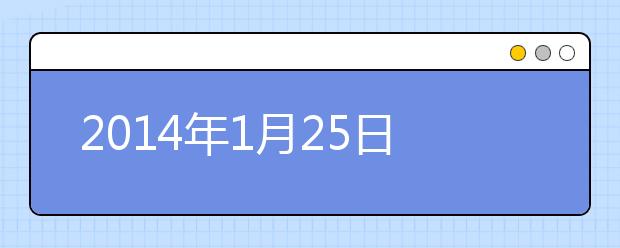当前城市:淄博[切换]
- 手机雅思无忧

扫码登录
雅思考试主要是通过对考生听、说、读、写四个方面英语能力的考核,综合测评考生的英语沟通运用能力,实现“沟通为本”的考试理念。对于雅思考生来说,也有很多考试难点和政策盲区需要帮助解答。今天雅思无忧网小编准备了文章2021年1月25日雅思阅读复习资料考试回忆,希望通过文章来解决雅思考生这方面的疑难问题,敬请关注。
| Passage one | |||
| 文章新旧 | 疑似旧题: V13089V12021 | ||
| 题材 | 心理类 | ||
|
文章标题
|
测谎技术的使用 | ||
|
文章题型
|
T/F/NG (6个)
填空 |
||
| 文章概要 |
一个新的识别犯罪的系统与之前旧的系统(测谎仪)的对比。之前的旧技术存在偏差,因为无法辨别人是因为紧张还是说谎导致心率不齐,而这项新技术会弥补这项缺陷,因为
它能通过对人血液流动速度、心率等变化来更准确的判断这个人有没有说谎,但是这个新的技术还在实验阶段,被实验者都是一些学生和志愿者。 |
||
| 部分答案 |
建议参考:
剑桥复习资料8 Test 1 Passage 3:Telepathy 心电感应实验 剑桥复习资料9 Test 2 Passage 3:A Neuroscientist reveals how to think differently 心理学谈特立行的行为 以上两篇文章均为经典的心理学实验理论分析类型话题,是中国考生不熟悉的雅思阅读难点的典型代表,文中容易涉及专业知识讲解,看似不易理解,但大部分题型带有顺 序性,建议参考。 相关背景知识阅读: However much we may abhor it, deception comes naturally to all living things. Birds do it by feigning injury to lead hungry predators away from nesting young. Spider crabs do it by disguise: adorning themselveswith strips of kelp and other debris, they pretend to be something they are not- and so escape their enemies. Nature amply rewards successful deceivers by allowing them to survive long enough to mate and reproduce. So it may come as no surprise to learn that human beings-who, according to psychologist Gerald Jellison of the University of South California, are lied to about 200 times a day, roughly one untruth every five minutes--often deceive for exactly the same reasons: to save their own skins or to get something they can't get by other means. But knowing how to catch deceit can be just as important a survival skill as knowing how to tell a lie and get away with it. A person able to spot falsehood quickly is unlikely to be swindled by an unscrupulous business associate or hoodwinked by a devious spouse. Luckily, nature provides more than enough clues to trap dissemblers in their own tangled webs--if you know where to look. By closely observing facial expressions, body language and tone of voice, practically anyone can recognize the telltale signs of lying. Researchers are even programming computers--like those used on Lie Detector--to get at the truth by *yzing the same physical cues available to the naked eye and ear. "With the proper training, many people can learn to reliably detect lies, " says Paul Ekman, professor of psychology at the University of California, San Francisco, who has spent the past 15 years studying the secret art of deception. In order to know what kind of lies work best, successful liars need to accurately assess other people's emotional states. Ekman's research shows that this same emotional intelligence is essential for good lie detectors, too. The emotional state to watch out for is stress, the conflict most liars feel between the truth and what they actually say and do. Even high-tech lie detectors don't detect lies as such; they merely detect the physical cues of emotions, which may or may not correspond to what the person being tested is saying. Polygraphs, for instance, measure respiration, heart rate and skin conductivity, which tend to increase when people are nervous--as they usually are when lying. Nervous people typically perspire, and the salts contained in perspiration conduct electricity. That's why a sudden leap in skin conductivity indicates nervousness--about getting caught, perhaps?--which might, in turn, suggest that someone is being economical with the truth. On the other hand, it might also mean that the lights in the television studio are too hot--which is one reason polygraph tests are inadmissible in court. "Good lie detectors don't rely on a single sign," Ekman says, "but interpret clusters of verbal and nonverbal clues that suggest someone might be lying." Those clues are written all over the face. Because the musculature of the face is directly connected to the areas of the brain that process emotion, the countenance can be a window to the soul. Neurological studies even suggest that genuine emotions travel different pathways through the brain than insincere ones. If a patient paralyzed by stroke on one side of the face, for example, is asked to *ile deliberately, only the mobile side of the mouth is raised. But tell that same person a funny joke, and the patient breaks into a full and spontaneous *ile. Very few people--most notably, actors and politicians--are able to consciously control all of their facial expressions. Lies can often be caught when the liar's true feelings briefly leak through the mask of deception. "We don't think before we feel," Ekman says. "Expressions tend to show up on the face before we're even conscious of experiencing an emotion." One of the most difficult facial expressions to fake--or conceal, if it is genuinely felt--is sadness. When someone is truly sad, the forehead wrinkles with grief and the inner corners of the eyebrows are pulled up. Fewer than 15% of the people Ekman tested were able to produce this eyebrow movement voluntarily. By contrast, the lowering of the eyebrows associated with an angry scowl can be replicated at will by almost everybody. "If someone claims they are sad and the inner corners of their eyebrows don't go up," Ekman says, "the sadness is probably false." The *ile, on the other hand, is one of the easiest facial expressions to counterfeit. It takes just two muscles--the zygomaticus major muscles that extend from the cheekbones to the corners of the lips--to produce a grin. But there's a catch. A genuine *ile affects not only the corners of the lips but also the orbicularis oculi, the muscle around the eye that produces the distinctive "crow's-feet" associated with people who laugh a lot. A counterfeit grin can be unmasked if the lip corners go up, the eyes crinkle but the inner corners of the eyebrows are not lowered, a movement controlled by the orbicularis oculi that is difficult to fake. The absence of lowered eyebrows is one reason why false *iles look so strained and stiff. |
||
|
Passage two
|
|||
|
文章新旧
|
旧
V081108 V100508 |
||
| 题材 |
商业经济
+气象学 |
||
| 文章标题 | Climate and Country Wealth/Wealth in a cold Climate | ||
|
文章题型
|
List of Headings
Sentence Completion |
||
| 文章内容 |
讲社会发展,和城市的关系还有和城市的发展,有个
research
指出
cold weather
跟发达的关系成正比
,
还举了很多例子
,
但也有人反对
,
比如说
Singapore
。讲到天气变化对各地的影响,开头说一个
frost
席卷了美,造成全上下冰冻一片。又对比欧洲、非洲、美、新加坡、墨西哥,提到一个
Master
因为在看一本“蚊子的书”的时候想到费城黄热病可能和气温有关,因为很冷,蚊子都冻死了,就没有传染介质了。然后就开始有很多人,写了很多书,做了很多实验,对比了粮食的
spread
从欧洲到欧洲很快,但是到非洲很慢,后还提到这个
master
觉的气温虽然是原因,但影响社会发展的还有其他原因,比如基础建设,但是他觉的气候会影响财富,财富影响建设,所以归根结蒂大互相影响,还有非洲的
aids
的问题,说不应该知识经济援助他们的政治系统,还应该教他们种东西之类。
|
||
| 部分答案 |
7个段落名称为A---G:
A: Inspiration B: Low temperature benefits people and crop C: The positive correlation between climate and country D: The spread of crop in European and other countries E: The wealth influenced by other factors besides climate F: The traditional view reflecting G: The best way to use aid Sentence Completion (不是全篇的,从后一部分找答案—eye detector 部分找答案) Singapore,这是一个climate和economy没关系的反例。 Eurasia,后面是than in Africa Einkorn wheat,文中一个例子 Finland,三段的例子,小但是发展的好。 administrative institutes,钱不应该给他们 |
||
|
Passage three
|
|||
| 文章新旧 |
旧
V100415 |
||
| 题材 | 人文历史类 | ||
| 文章标题 | Cave Art | ||
| 文章题型 |
Y/N/NG (5个)
Matching (段落信息配对)5个 Sentence completion 完成句子 5个 (也属于给上句选下句的Matching) |
||
| 文章内容 |
有关岩洞艺术的发展历史
往期复习资料参考: 现在有近350个洞穴在法和西班牙被发现,包含自史前时代起的艺术。起初,画的年龄是一个有争议的问题,因为像放射性碳测年的方法,会被或旧或新的材料的污染样品误导,而且洞穴和岩石悬(叶艺术)通常充斥着很多时期的碎片。 但是,随后的进步使得测定年龄变得有可能:通过采样粉状颜料本身和火把在墙上留下的印记。题材的选择也可以显示时期,例如驯鹿在西班牙洞穴Cueva DE LAS Monedas里被发现就把这种艺术确定在了last Ice Age。 A段句引出,对岩洞绘画进行了大致的描述。 C段前部分描述了岩画的主题,后部分描述了岩画的图案样式。 D段描述了对于岩画的起源时间是不太确定的。澳大利亚的cave painting E段后2句描述了手工印制的岩画。泰,马来西亚,印尼,和缅甸的painting。就是Asia的。 剑桥复习资料 6 Test 2 Passage 3: Numeration 人类学会使用数字的历史进程 人文社会类话题属于12/13年度的热门考察项目,虽然话题多元,可能涉及人类古代文明,现代科技,各大洲特产发展历史等等,但是文章中时间脉络清晰,定位直接,应注意细心认真对待,避免不必要的失分 参考机经:V100415 |
||
| 部分答案 |
--------------
|
||
以上就是雅思无忧网为您准备的2021年1月25日雅思阅读复习资料考试回忆访问雅思无忧网(https://www.yasi.cn/),了解更多雅思考试新消息,新动态。
 2014年1月25日雅思阅读复习资料考试回忆
2014年1月25日雅思阅读复习资料考试回忆
2014年1月25日雅思考结束,环球教育一线名师特意参加此次考,希望能够给考生们带来新考资讯。小编时
2021年10月26日 12:00 2014年1月25日雅思写作复习资料考试回忆
2014年1月25日雅思写作复习资料考试回忆
2014年1月25日雅思考结束,环球教育一线名师特意参加此次考,希望时间能够给考生们带来新考资讯。小
2021年10月26日 11:55 2014年1月25日雅思听力复习资料考试回忆
2014年1月25日雅思听力复习资料考试回忆
2014年1月25日雅思考结束,环球教育一线名师特意参加此次考,希望时间能够给考生们带来新考资讯。小
2021年10月26日 12:05 2014年1月25日雅思口语复习资料考试回忆
2014年1月25日雅思口语复习资料考试回忆
2014年1月25日雅思考结束,环球教育一线名师特意参加此次考,希望时间能够给考生们带来新考资讯。小
2021年10月26日 12:10 2014年1月25日雅思写作复习资料考试回忆
2014年1月25日雅思写作复习资料考试回忆
2014年1月25日雅思考结束,环球教育一线名师特意参加此次考,希望时间能够给考生们带来新考资讯。小
2022年01月25日 18:51 2014年1月25日雅思听力复习资料考试回忆
2014年1月25日雅思听力复习资料考试回忆
2014年1月25日雅思考结束,环球教育一线名师特意参加此次考,希望时间能够给考生们带来新考资讯。小
2022年01月25日 19:31 2014年1月25日雅思口语复习资料考试回忆
2014年1月25日雅思口语复习资料考试回忆
2014年1月25日雅思考结束,环球教育一线名师特意参加此次考,希望时间能够给考生们带来新考资讯。小
2022年01月25日 19:51 2013年5月25日雅思阅读复习资料解析-祝燕
2013年5月25日雅思阅读复习资料解析-祝燕
篇 调查的方法(容易,有questionnaire, interview等几种) 简答题6题
2021年10月27日 05:32 2013年5月25日雅思阅读复习资料解析-祝燕
2013年5月25日雅思阅读复习资料解析-祝燕
篇 调查的方法(容易,有questionnaire, interview等几种) 简答题6题
2022年01月28日 17:13 2014年10月25日雅思阅读机经
2014年10月25日雅思阅读机经
2014年10月25日雅思考笔已经结束,环球教育学校袁蕊老师亲临考场,为大带来史上全面的雅思考回忆。
2021年10月26日 00:58